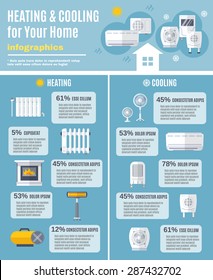The Ultimate Guide To Recognizing Heat Pumps - How Do They Function?
The Ultimate Guide To Recognizing Heat Pumps - How Do They Function?
Blog Article
Write-Up Author-Roy Hanna
The very best heatpump can save you significant amounts of cash on energy bills. They can also help reduce greenhouse gas exhausts, particularly if you use electrical power instead of nonrenewable fuel sources like propane and heating oil or electric-resistance heaters.
Heat pumps function significantly the same as a/c do. This makes them a practical option to traditional electric home heater.
How They Work
Heat pumps cool homes in the summertime and, with a little help from electrical energy or natural gas, they supply a few of your home's heating in the winter season. They're a great option for people who want to minimize their use of fossil fuels however aren't all set to change their existing heating system and air conditioning system.
They count on the physical truth that also in air that appears too cool, there's still energy present: cozy air is always moving, and it intends to relocate right into cooler, lower-pressure settings like your home.
The majority of ENERGY celebrity licensed heatpump operate at near their heating or cooling ability throughout the majority of the year, decreasing on/off cycling and saving power. For the very best efficiency, focus on systems with a high SEER and HSPF ranking.
The Compressor
The heart of the heatpump is the compressor, which is additionally known as an air compressor. This mechanical moving tool utilizes potential power from power development to increase the stress of a gas by reducing its quantity. click the up coming webpage is different from a pump because it only services gases and can not deal with liquids, as pumps do.
Climatic air goes into the compressor with an inlet shutoff. It circumnavigates vane-mounted arms with self-adjusting size that separate the interior of the compressor, producing several tooth cavities of differing size. The rotor's spin forces these tooth cavities to move in and out of stage with each other, pressing the air.
The compressor attracts the low-temperature, high-pressure refrigerant vapor from the evaporator and presses it right into the warm, pressurized state of a gas. This procedure is repeated as required to supply home heating or air conditioning as required. The compressor likewise includes a desuperheater coil that reuses the waste heat and adds superheat to the refrigerant, changing it from its fluid to vapor state.
The Evaporator
The evaporator in heat pumps does the same point as it does in refrigerators and air conditioners, changing liquid refrigerant right into an aeriform vapor that gets rid of warm from the area. Heat pump systems would not work without this important tool.
This part of the system lies inside your home or building in an interior air trainer, which can be either a ducted or ductless unit. It consists of an evaporator coil and the compressor that presses the low-pressure vapor from the evaporator to high pressure gas.
Heat pumps absorb ambient warm from the air, and after that utilize electrical power to move that warmth to a home or company in heating mode. That makes them a lot a lot more energy effective than electrical heating units or furnaces, and since they're using tidy electrical energy from the grid (and not shedding fuel), they also produce far less discharges. That's why heatpump are such wonderful environmental choices. (And also a big reason that they're coming to be so popular.).
The Thermostat.
Heatpump are great choices for homes in cool environments, and you can utilize them in combination with standard duct-based systems and even go ductless. They're an excellent alternative to fossil fuel heater or conventional electrical heaters, and they're extra lasting than oil, gas or nuclear a/c equipment.
Your thermostat is the most crucial element of your heat pump system, and it functions very in different ways than a standard thermostat. All mechanical thermostats (all non-electronic ones) job by using substances that change size with increasing temperature level, like curled bimetallic strips or the increasing wax in an automobile radiator shutoff.
These strips consist of 2 different kinds of steel, and they're bolted with each other to create a bridge that completes an electric circuit linked to your heating and cooling system. As https://www.businesswire.com/news/home/20201027005127/en/Generational-Equity-Advises-Hamilton-Service-in-its-Sale-to-Temp-Con gets warmer, one side of the bridge increases faster than the various other, which causes it to bend and signify that the heater is required. When the heatpump remains in heating mode, the reversing shutoff turns around the flow of refrigerant, to ensure that the outside coil now operates as an evaporator and the interior cyndrical tube becomes a condenser.